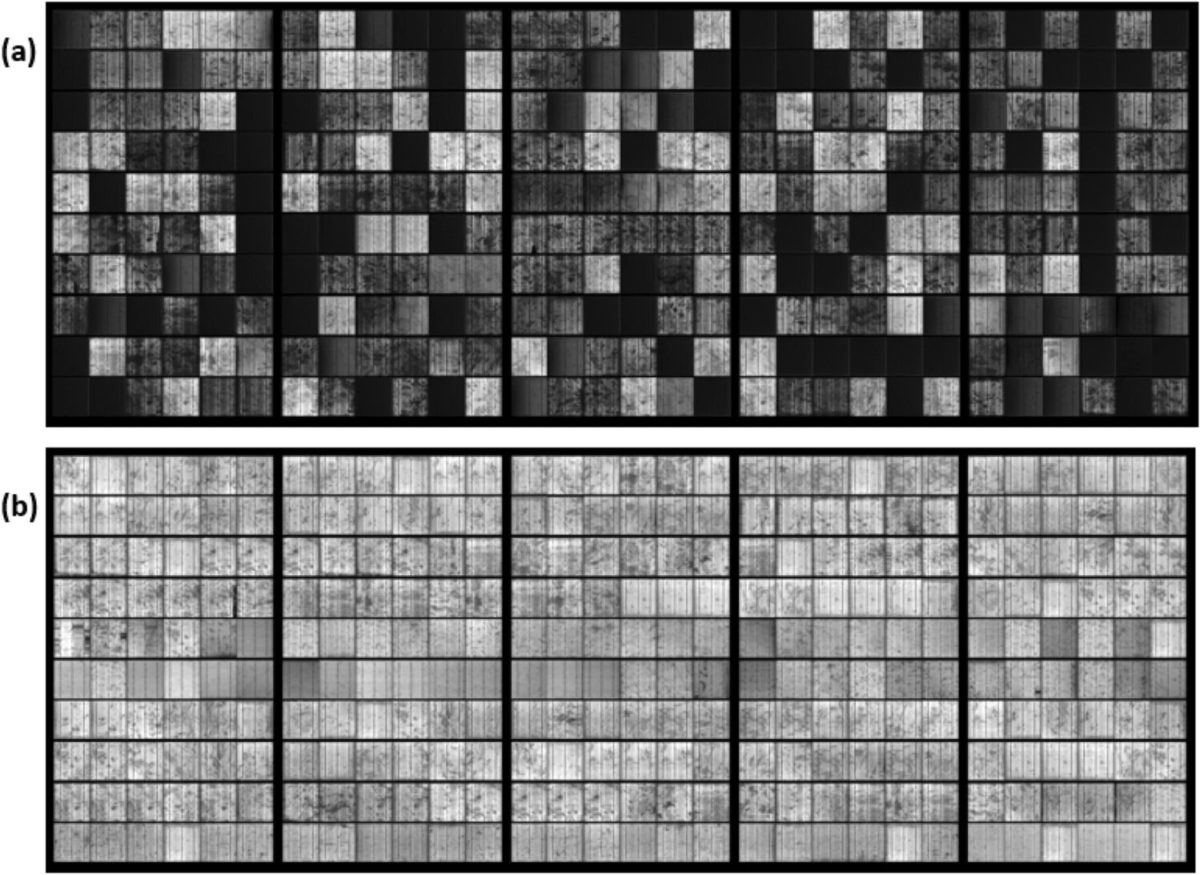PID covers a range of different effects that have been observed to reduce PV module performance in the field. The way these effects progress can differ depending on module materials, installation conditions, and other factors, generally related to currents leaking from PV cells into the module frame or other elements.
Scientists at York University in the United Kingdom examined how PID affected a 1.2 MW PV installation in Barcelona, Spain, in a multi-year study beginning in 2019. The study used thermal drone imaging to spot PID affecting several module strings within the project – by looking for modules with elevated surface temperature. The study found four strings in the project that were affected by PID after one year in operation, and continued to observe these over time.
The results of the study can be found in “Field study on the severity of photovoltaic potential induced degradation,” which was recently published in Scientific Reports. The group found that these strings were initially affected due to grounding faults in the project’s inverters. Comparing results from the affected strings to a “healthy” one in the same project, the key findings include that even where PID appears to have had little effect on overall system performance, once it appears it can cause a sudden drop in performance at almost any time.
And it can also begin to develop in a string at almost any time, meaning more frequent testing or drone imaging should be carried out to prevent it. The study also found that an “anti-PID” box, fitted to the identified strings after one year in operation, could prevent further PID performance loss and even bring about some degree of recovery, though some modules had permanently reduced performance – outlining the need for early detection of PID mechanisms.
Polarization PID
Popular content
In further recently published research, scientists led by the University of Tsukuba in Japan conducted a close analysis of one PID mechanism known as “polarization PID,” which is known as the fastest progressing mode of PID, has been demonstrated in various cell architectures, and has shown resistance to common mitigation methods, such as switching to a POE encapsulant.
In their paper, “Mechanistic Understanding of Polarization-Type Potential-Induced Degradation in Crystalline-Silicon Photovoltaic Cell Modules,” which was recently published in Advanced Energy & Sustainability Research, the group develops a model for polarization PID mechanisms and outlines two factors that distinguish it from others.
“The two following features were particularly important: the bias direction causing degradation is not always negative. It depends on the doping of the surface,” the scientists explained. “Also, polarization-type PID is considerably faster than PID of other types. It saturates within a very short time. A model that is consistent with the characteristic features must be built.”
The group applied its “K-Center” model to various examples, illustrating how it can accurately explain various PID effects, and with further development they expect it to be a valuable tool in understanding and mitigating performance losses caused by polarization PID.
This content is protected by copyright and may not be reused. If you want to cooperate with us and would like to reuse some of our content, please contact: editors@pv-magazine.com.



By submitting this form you agree to pv magazine using your data for the purposes of publishing your comment.
Your personal data will only be disclosed or otherwise transmitted to third parties for the purposes of spam filtering or if this is necessary for technical maintenance of the website. Any other transfer to third parties will not take place unless this is justified on the basis of applicable data protection regulations or if pv magazine is legally obliged to do so.
You may revoke this consent at any time with effect for the future, in which case your personal data will be deleted immediately. Otherwise, your data will be deleted if pv magazine has processed your request or the purpose of data storage is fulfilled.
Further information on data privacy can be found in our Data Protection Policy.